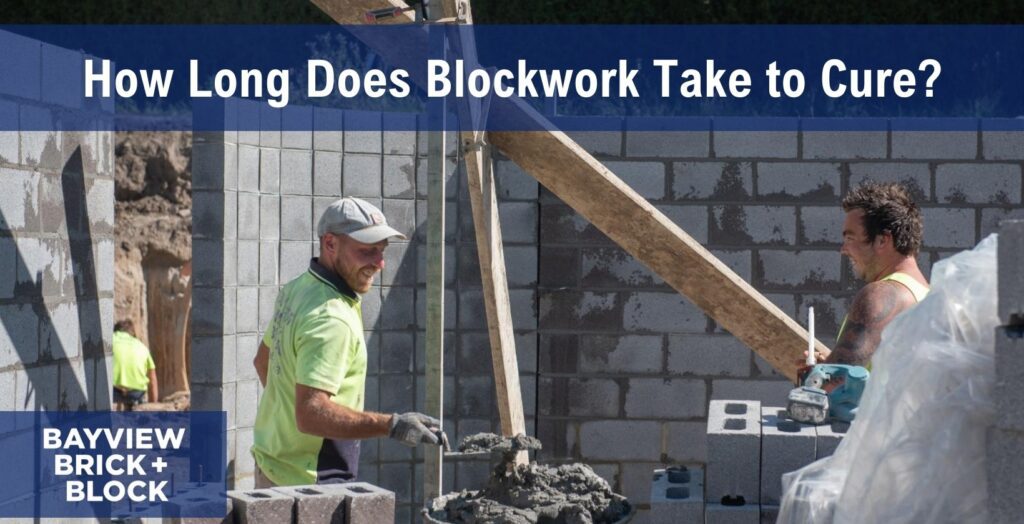It takes around 28 days for blockwork to reach full strength, though it gains most of its durability in the first week. Curing time depends on factors like mix design, weather conditions, and moisture retention. A professional bricklayer knows that without proper curing, blocks may not achieve the required hardness.
Our blog covers how curing affects block construction, the elements that impact drying times, and the best techniques to promote strong, long-lasting walls.
Understanding the Curing Process in Block Construction
Curing allows concrete blocks to develop the strength needed for durability and stability. Water retention during this phase prevents rapid moisture loss, reducing cracks and shrinkage. Without proper hydration, the mix can weaken, leading to compromised structural integrity.
Several factors influence curing, including temperature, humidity, and the cement-to-water ratio. Warm conditions accelerate moisture evaporation, while cold weather slows hydration. Covering newly laid walls with hessian or plastic sheeting helps maintain consistent dampness.
Unlike brickwork, block construction requires careful moisture management due to its larger mass and higher cement content. Blocklaying vs bricklaying differs in curing needs, with blocks relying on steady hydration for uniform strength. Spraying water or applying curing compounds can improve performance and longevity.

Factors That Influence Blockwork Curing Time
Here are the factors that influence curing time:
- Temperature and Weather Conditions: Hot weather speeds up evaporation, increasing the risk of shrinkage cracks. Cold temperatures slow hydration, delaying strength development.
- Humidity Levels: Dry air pulls moisture from the surface too quickly, leading to uneven curing. High humidity helps retain dampness, promoting better hydration.
- Mix Design and Cement Content: More cement accelerates setting, but hydration still takes time. A well-balanced mix ensures gradual strength gain without excessive shrinkage.
- Protection Methods: Covering work with hessian or plastic sheeting reduces moisture loss. Regular wetting prevents surface cracks and supports even drying. Proper curing also strengthens blocklaying mortar, reducing the risk of weak joints.
Best Practices for Proper Curing
Curing correctly strengthens blockwork and reduces the risk of shrinkage cracks. Without proper moisture retention, blocks may not harden evenly, leading to weaker walls. Following these best practices helps maintain hydration and supports long-term durability.
Keep Blocks Damp
Regular wetting prevents rapid moisture loss, allowing proper hydration. Spraying water lightly or using damp hessian stops surfaces from drying too quickly. Avoid over-saturating, as excess water can weaken mortar bonds.
Use Protective Coverings
Plastic sheeting or hessian traps moisture, slowing evaporation. Covering fresh work shields it from wind and direct sunlight. Secure edges to stop air from drying exposed surfaces.
Control Drying Conditions
Working in extreme heat or cold affects curing. Too much heat speeds up drying, while cold slows setting. Choosing the right time of day for work helps maintain stable conditions.
Allow Sufficient Time
Concrete blocks need at least seven days of curing to gain strength. Rushing the process can lead to weak mortar joints. Waiting the full period ensures proper hardening and durability.
Monitor for Cracks
Checking for surface cracks helps catch curing issues early. Small fissures indicate moisture loss, requiring additional dampening. Addressing these problems prevents deeper structural concerns later.

